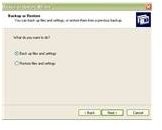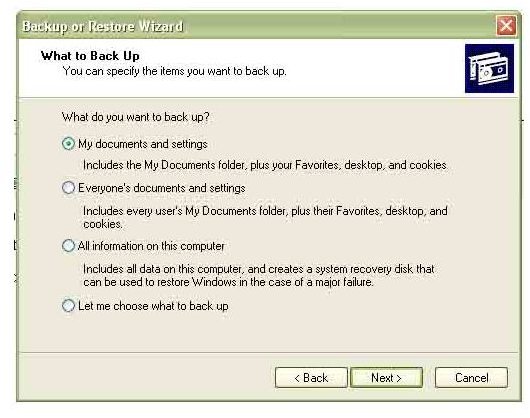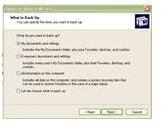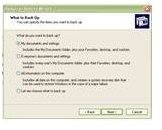Create a Mobile Backup: How to Copy Your Files and Settings
Backing up Your Files and Settings.
It is useful to have a backup copy of your important files and settings should you need to apply them to another PC login profile. Creating a mobile backup will also serve as a source should you have any malware or viruses attack your system. If you create a mobile backup it will work in providing a restore point.
Windows Backup Utility is free and easy to use. By creating a map of data and settings locations, the wizard will do the rest of the work.
Mobile Backups
Creating a mobile backup can be useful if you need to keep your data on more than one profile. The first thing to start with is developing a systematic structure so that you can regularly update changes without incurring data loss. Windows provides a very straightforward backup utility, provided that you stick with the default location for folders such as favourites and my documents, for example.
The Windows Backup utility offers a generic backup plus backup via particular folders that you select. Having a structure here is important so that you will not forget any files or folders stored in obscure locations.
You can also do a Google based search for free backup programs and there are many available to test and see if they meet your requirements.
Windows Backup Utility
If you are using Windows 7, locate the backup utility via:
- Start.
- Control Panel.
- System and Maintenance.
- Backup and Restore.
You can locate the Windows XP backup utility via:
-
Start.
-
Programs.
-
Accessories.
-
System tools.
-
Backup.
You will be presented with a welcome window; select always start in wizard mode for the meantime.
Using the Windows Backup Utility Wizard
The Windows backup wizard is useful for creating a mobile backup and the steps are easy to follow.
In the next window, you have the following two options:
In Windows 7
- Set up backup.
- Back up now.
Select the first option if you have never made a backup before. Select the second option if you have previously backed up your computer.
In Windows XP
-
Backup files and settings.

-
Restore files and settings.
Select the first option and hit next. You can also use the system tools to regularly schedule backups.
What to Backup
You have the following options available to backup:

-
My documents and settings.
-
Everyone’s documents and settings.
-
All information on this computer.
-
Let me choose what to backup.

To create a mobile backup, options one or four would be preferable.
You are then required to select media such as a removable hard disk or pen drive, depending on the backup size, and name your backup. Once you have your backup complete, you are now able to copy the contents and you can choose to copy the files and folders over individually, based on their location, or use the restore wizard of this utility.
It is probably best to leave the backup running on your PC without doing any other tasks; it may take quite some time depending on the size of the data.
Restoring your Backup to a New Location

Using the same wizard in Windows 7, select the option to Restore my files or Restore all users’ files once you launch the utility. If you are using Windows XP, select the option to Restore files and settings. The backup file created earlier in this guide was saved with the following extension: .bkf
If Windows has not located the file automatically for you, use the browse feature to navigate to the location that it is stored.
Windows also provides scheduled tasks under system tools whereby you can create a regular backup, ensuring that your copy is up to date.
References
- Windows: Restore Files From a Backup, http://windows.microsoft.com/en-US/windows7/Restore-files-from-a-backup
- Windows: Video: Backing Up and Restoring Your Computer, http://windows.microsoft.com/en-US/windows7/help/videos/backing-up-and-restoring-your-computer
- Screenshots provided by writer
- Windows: Back Up Your Files, http://windows.microsoft.com/en-US/windows7/Back-up-your-files
- Computer Education: Windows XP Backup Utility, http://vlaurie.com/computers2/Articles/xpbackup.htm
